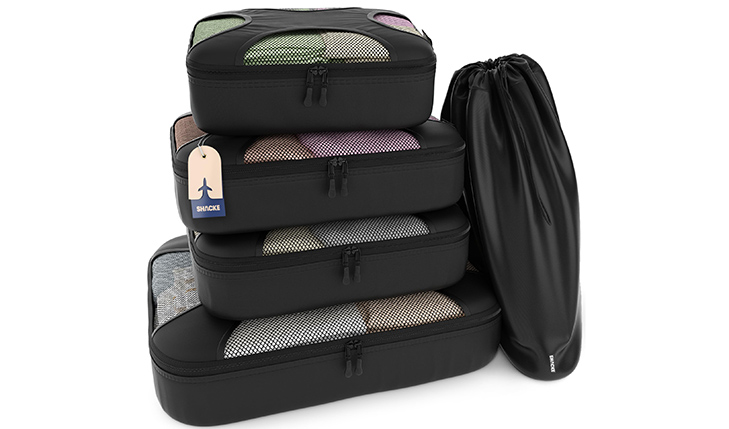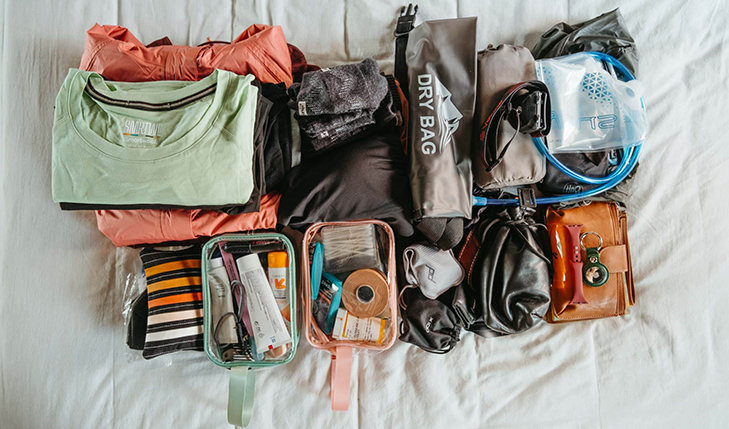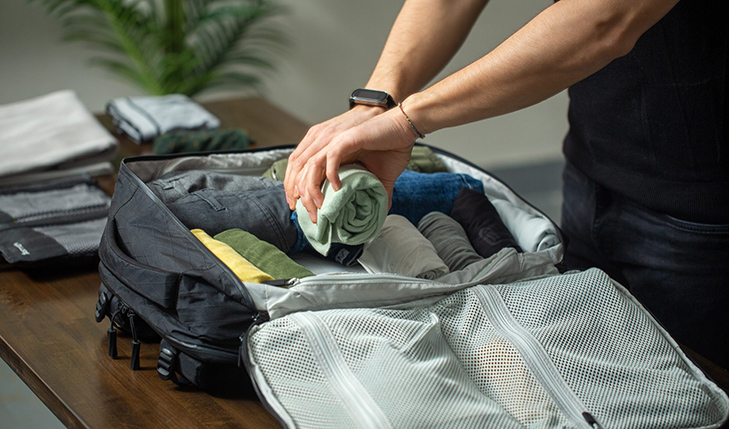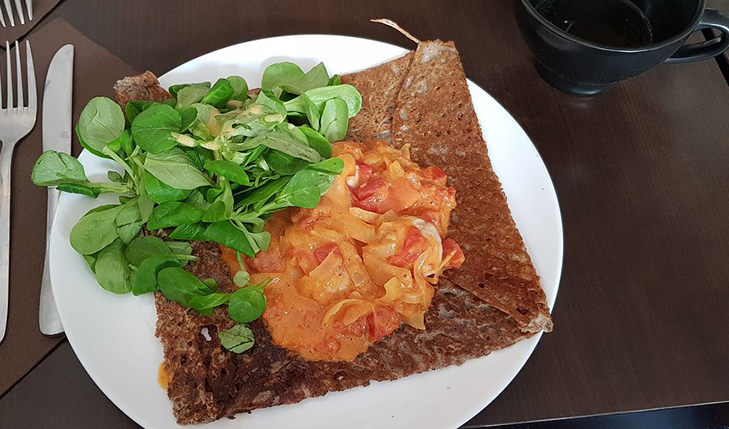Rennes quickly became one of my favorite European gems. With its charming half-timbered houses, vibrant university culture, and delicious Breton cuisine, Rennes offers a delightful blend of the historic and the modern. I’ll walk you—through my personal eyes and experiences—through everything you need to know before you pack: from must-bring items to navigating the métro (tramway), street food bliss, budgeting tips, day trip ideas, and even what insurance I bought and why.
1. What to Pack & What to Wear in Rennes
In my experience, Rennes weather can be unpredictable—even in summer, you may encounter drizzle. I always pack…
- Layered clothing: light long-sleeve shirts, a warm sweater or fleece, and a compact waterproof jacket. On one trip in early April, I wore my sweater in the morning, layered a windbreaker over it midday, and zipped up fully when a sudden rain shower arrived.
- Comfortable walking shoes: Rennes is best explored on foot. I wore cushioned sneakers that got me through cobblestone streets, museum halls, and the marché des Lices with ease.
- A small, secure daypack: perfect for holding my water bottle, guidebook, and souvenirs I pick up at street markets.
- Adapter plug, portable battery, and reusable water bottle—the latter especially handy when exploring parks like Thabor.
- Umbrella or rain‑cap: Breton rain can be light but persistent.
2. Weather & Clothing Decisions
Having monitored the weather during several trips, Rennes averages mild temperatures—ranging from about 5 °C in winter to 25 °C in summer. Rain can fall any month. My packing strategy always includes:
- Spring/Autumn: mix of short sleeves, a sweater, and a rain shell.
- Summer: T-shirts, light trousers or dresses, plus a light jacket for evenings.
- Winter: warm coat, scarf, gloves, and waterproof boots—seeing early December frost by the half-timbered Place des Lices taught me not to underestimate chilly Breton winds.
Dressing modestly (but comfortably) is ideal, especially when visiting churches like Saint‑Pierre or elegant cafés; I blend in by avoiding overly casual attire like gym shorts.
3. Culture, Currency & Budgeting
Being invested in Rennes’s culture, I quickly learned:
François‑Breton Culture & Courtesy
- Politeness matters: Greeting shopkeepers with “Bonjour” before speaking is customary. I remember how the florist brightened when I greeted her in French—even with my imperfect accent.
- Sunday closure: Many small shops and cafés close on Sunday afternoons—plan accordingly.
- Festivals: Rennes hosts Les Tombées de la Nuit and Travelling—they’re lively, free‑spirited street performance festivals. I once stayed an evening in March to see popping dance and theater acts in Place Saint‑Anne.
Currency & Budget
- Rennes uses the Euro (€). I usually withdraw about €200 from an ATM at Rennes Airport after arriving to cover my initial needs—taxis or a SIM card.
- Daily food/budget breakdown from my visits:
- Street‑food breakfast – €5–8 (galette or crêpe with cider).
- Lunch in a casual bistro – €12–15.
- Metro rides (covered below) – budget €1.80 per ride or €15‑€20 for a day card.
- Museums/sites – €5–10 each.
So I generally budget €60–80/day for a comfortable solo visit.
4. Public Transit: Metro, Buses & Tickets
Rennes doesn’t have a “metro” in the tunnel subways sense; instead, it has a tramway system (Lines A and B) and an excellent bus network run by STAR (Service des Transports de l’Agglomération Rennaise).
How I Navigate it:
- Ticket types:
- Single ride ticket is about €1.80, valid for 1 hour across trams or buses.
- Day pass (“Ticket 1 jour”) is ~€4.60 and gives unlimited trips on trams/buses until midnight.
- Ten-ride carnet costs ~€16 and I often buy that when staying several days—it reduces per-ride cost and is flexible.
I usually start my day by buying a ten-ride carnet, hitting cafés, shops, and museums. On a particularly busy sightseeing day, I’d switch to the day pass for endless trips, like when I hopped between Parlement de Bretagne, Opera House, and suburbs.
How to get the tram ticket:
I buy tickets at the machines in tramway stations (credit card or cash), or on the Star BreizhGo app (handy and supports Apple Pay). I make sure to validate my ticket in the yellow validation machines before boarding. Forgetting to validate one morning cost me a fine—but the ticket inspector was heading into my carriage, so I conceded it was my error.
Comparison:
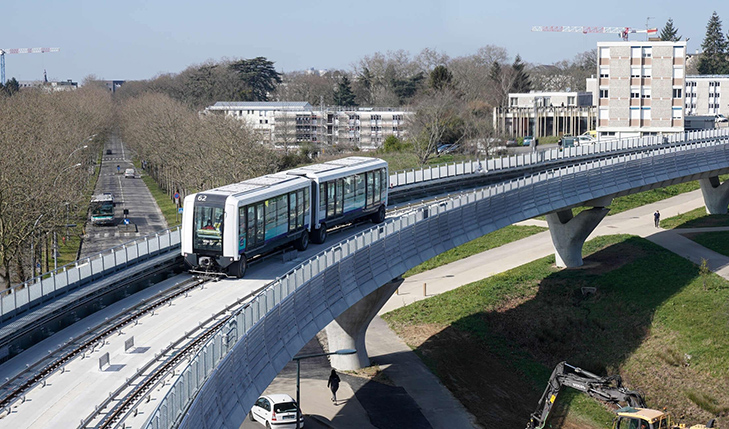
- Single ticket: good for occasional rides, minimal cost but managing usage.
- Carnet: efficient if using 6–10 rides over a few days—I get about €1.60 per ride.
- Day pass: great value if I’m hopping all day—saves stress of counting rides.
5. Street Food & Safety
Rennes street food is a joy—here are my favorite treats and safety tips:
- Galettes and crêpes sold at stalls near Place Hoche or Marché des Lices on Saturday morning. I always go for a buckwheat galette with ham, cheese, and egg, then follow with a sweet crêpe with sugar and cider.
- Chouchen (local mead) and cider samples sometimes accompany food stands—delicious but watch your intake if continuing to walk around.
- Safety tips:
- Choose stalls with good turnover—freshly made crêpes means hot, safe batter.
- Check that toppings like ham or cheese are refrigerated on-site or frequently restocked—my favorite vendor smiled and said they clean their platters every hour, which made me trust the cheese they’d slide onto the galette.
- Always carry a small packet of hand–sanitizer—use before eating.
6. Staying Connected: Local SIM Cards
I always buy a local prepaid SIM card when staying a few days:
- At the Rennes airport or city’s Orange / SFR / Bouygues stores—options:
- For example, Orange Holiday Zen plan: ~€20 for 10 GB data + some domestic calls/SMS – excellent for navigating or using maps.
- SFR “La Carte SIM”: a similar deal—6 GB data for €15.
I went with Orange since their signal felt strongest when I took a day trip to Saint‑Malo. The SIM purchase was quick: passport ID required, payment by card or cash, and I had data working within 10 minutes.
7. Five-Day Rennes Mini Itinerary
Here’s how I spend a perfect five-day trip:
Day 1 – Historic Center & Markets
- Morning: Market at Marché des Lices (Saturdays) – street‑food breakfast.
- Midday: Explore half-timbered streets, Parlement de Bretagne.
- Evening: Dinner in Saint‑Anne district, walk along Vilaine River.
Day 2 – Museums & Parks
- Thabor Gardens for morning stroll.
- Musée des Beaux‑Arts in afternoon.
- Sunset café by Place Sainte‑Anne.
Day 3 – Day-trip to Saint‑Malo or Mont‑Saint‑Michel
- Early bus or train to Saint‑Malo, spend day exploring walled city.
- Return in evening—treat yourself to a seafood dinner in Rennes.
Day 4 – Modern Rennes & University Vibe
- Visit contemporary art at Le Triangle.
- Walk through République & République Métro station area, browse boutiques.
- Evening: catch local music at a bar near Université.
Day 5 – Day-trip to Fougères or Dinan
- Head out to medieval town of Fougères (castle) or pretty Dinan.
- Return to Rennes for final dinner of galette + cider.
Budget Adjustment:
I track expenses in a simple app—splitting days like museum day (Day 2) costs less (around €50 total) vs. day-trips (Days 3 & 5), which bump to €80–100 due to transport and guided walk fees. If you want to save, eat from stalls and take regional trains instead of tours.
8. Travel Insurance Recommendations
I always take out travel insurance before visiting Rennes. One policy I used:
- “World Nomads Standard Plan”: Costs about €45 for a week. It covered:
- Trip cancellation (e.g. if weather washed out a stormy weekend I’d booked flights for),
- Medical emergencies,
- Lost baggage, and
- 24/7 emergency assistance.
Another option:
- “AXA Travel Insurance – Silver Plan”: Priced around €60 for 5 days, included higher baggage coverage and optional personal liability.
I chose World Nomads because I found their online claim process straightforward—once I lost a sweater in a café and they reimbursed me €25 within a week. Plus, I’m able to purchase and manage it entirely online.

From my many stays in Rennes, I can honestly say this city captured my heart with its blend of friendliness and authenticity. I’ll never forget wandering into a local crêperie on a drizzly evening and being greeted with warmth—I felt local culture in every crepe’s savory fold and every tram ride’s gentle hum.
Traveling light, staying flexible with weather‑adapted clothing, and using the tram card wisely kept my trip smooth—and budgeting a mix of flexible and fixed costs helped me enjoy every moment without stress.
Rennes is a city that rewards curiosity: turn a corner and find a quirky café, gallery, or mural.
